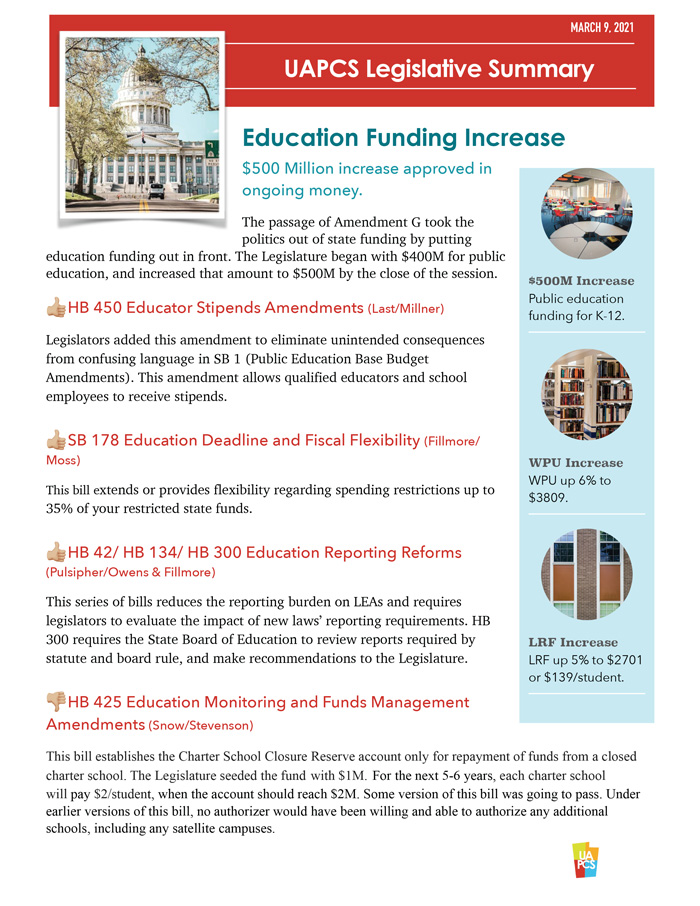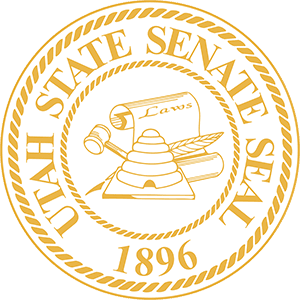By Lincoln Fillmore, Utah State Senator, District 10
In the midst of record funding increases for public schools, bonuses for every educator, and great efforts to improve flexibility and ease the administrative burden, there was also a quiet little meeting that saved funding for thousands of teachers.
It happened the last night of the session when UAPCS Executive Director Royce Van Tassell pulled me off the Senate floor. Royce pointed out, though it had escaped the attention of everyone else—advocates, attorneys, legislators, educators, that the language in SB1 that provided bonuses for school faculty and staff actually disqualified thousands of educators and paraprofessionals from receiving it.
Working quickly, the legislature got a new bill drafted and passed to correct the discrepancy. Thousands of educators, including many of you reading this, literally owe your March bonus to RVT’s attention to detail, knowledge of the legislative process, and key relationships.
That practically unnoticed event capped off a banner — even a record-breaking — year for public education in Utah’s legislature. That is a bigger crow than it should be, since most of this year’s “record-breaking” increase is just restoring the last “record-breaking” increase from 2020, which ultimately was a victim of the pandemic’s effect on the economy.
The six percent WPU increase was restored (on top of last year’s 1.8%), local replacement funding continues to rise as property values rise, and the Legislature made investments in at-risk funding, technology, special education, and funding equalization. Besides funding, the Legislature removed requirements for five reports and put in place new hurdles to consider before burdening schools with cumbersome new reporting requirements.
Voters deserve at least as much credit as anyone for the big increases to funding. By approving Amendment G, voters insisted that the Legislature prioritize not only growth and inflation in education funding, but also growth and stability. So, this year for the first time, the Legislature also deposited more than $100 million into a stabilization fund to protect education funding when the economy’s performance is not so rosy.
To summarize key education actions at the 2021 Legislature:
- WPU increases by six percent, up to $3,809
- LRF increases by five percent, up to $2701
- At-Risk funding increases by about $3 million
- LEAs can tap into a $4 million grant to upgrade financial systems
- Bonuses provided to every teacher at $1,500 and other staff at $1,000 (already paid out as you read this)
- Stabilization funding deposited
- Partial restoration of funding for the SpEd high-cost risk pool (funding was eliminated in 2020)
- Creation of “Base Funding” for charters and districts to replace “Administrative Costs”
Finally, the Legislature passed SB 178, which allows LEAs to respond flexibly to the changes that Covid-19 forced on education. Educators weren’t in charge of education this year. Neither was the Legislature, the State Board, or parents and students, for that matter. The virus was in charge. Recognizing the need for schools to make adjustments, schools can transfer up to 35% of funding from any restricted fund into another fund for 2020.
If we can capitalize on the progress made this year, 2021 may generate momentum for continued improvements for funding, flexibility, and local control.








